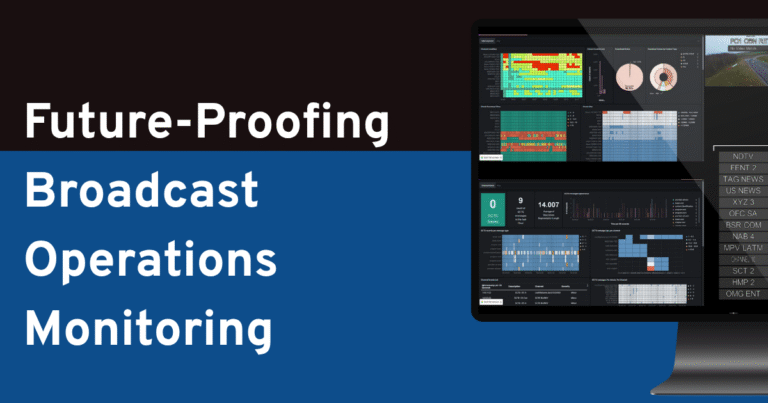The cloud and IP workflows are not just about technology upgrades; they’re strategic tools for unlocking the full potential of media businesses in a dynamic industry
The European broadcast and media industries face unique challenges in adopting cloud-based solutions due to strict regulations, data privacy concerns, and catering to a multilingual audience. Despite slower migration as compared to the United States, Europeans are experiencing a heightened awareness of the significant benefits in scalability and agility offered by the cloud.
Embracing cloud for business agility
The global transition to cloud infrastructure is a strategic move towards business agility, tailored to meet unique market needs. This shift is crucial in the European market with its vast cultural diversity and language variances, enabling organizations to dynamically scale resources to meet localized demands and preferences. Furthermore, in line with Europe’s focus on sustainability, cloud adoption allows companies to align with environmental regulations and reduce their carbon footprint.
The cloud’s potential for performance enhancement and operational cost savings is particularly relevant in diverse economies. Moving to the cloud is a key step in staying agile and competitive in Europe’s complex and varied markets. It allows more efficient resource utilization and streamlines workflows, which is crucial in varying economic scales.
Most importantly, the cloud is not an all-or-nothing opportunity; it can be used in ground/cloud hybrid workflows to optimise both cost and operational efficiencies on an ongoing basis.
Advantages of cloud-based solutions
Cloud solutions simplify processes by automating labor-intensive tasks, harnessing the power of artificial intelligence and machine learning, and fine-tuning content production and distribution workflows, which leads to a notable increase in productivity and a decrease in operational costs. In turn, the need for extensive hardware infrastructure and associated maintenance expenses are dramatically reduced. Moreover, the shift to cloud-based solutions results in administrative cost savings and offers a centralized approach to data security.
Cost efficiency and scalability
Cloud-based solutions come with cost efficiency, crucial for tackling the challenges of varied regional markets and content. Traditional infrastructures often lead to overprovisioning or underutilizing resources, incurring unnecessary costs. Cloud allows organizations to pay only for what they use, optimizing resource allocation and maximizing operational efficiency.
Cloud’s scalability enables operations to easily adjust to sudden spikes in demand caused by fluctuating market trends and audience preferences, providing a secure path for growth and adaptation without significant upfront investments. Scalability ensures that businesses can efficiently manage content delivery and fulfill viewer expectations, reducing the risk associated with unpredictable audience demand.
Security and regulatory considerations
In the realm of cloud-based operations, data security remains a paramount concern. It’s vital for organizations to choose cloud providers that deliver comprehensive security measures, such as robust data encryption, advanced access controls, and frequent security audits. Selecting providers that adhere to industry regulations and standards is essential to safeguard data privacy and protection. For companies operating across different regions, this means ensuring compliance across a variety of regulatory frameworks. By entrusting data to such providers, organizations can effectively manage the risks associated with data security and enjoy an elevated level of confidence.
Rapid adoption of IP workflows and integration challenges
The swift adoption of IP workflows is revolutionizing the media and entertainment industry, replacing traditional SDI workflows with more reliable, scalable, and flexible IP-based solutions. This transition enhances agility, allowing broadcast companies to swiftly adapt to market shifts and expand their reach. However, the integration of various systems and devices involving numerous vendors can be complex.
Platforms like the TAG Realtime Media Performance platform play a crucial role in simplifying this complexity. They offer a unified solution that supports interoperability among the many components involved in IP-based workflows. TAG Video Systems, with its 100 per cent software, IP-native solution, continuously adapts to new formats, codecs, and industry changes, ensuring seamless integration and interaction between different solutions. This is vital for maintaining Quality of Service (QoS) and delivering an optimal Quality of Experience (QoE) to today’s audiences where responsiveness and seamless viewing experiences are key. Proper integration of these complex and evolving workflows is critical in today’s fast-paced media environment, ensuring the delivery of the best possible user experiences.

Overcoming challenges in cloud migration
Addressing the hurdles in cloud migration is crucial for a smooth transition. Investing in staff training to handle new systems and technologies is vital for ensuring efficiency and minimizing disruption. Additionally, existing applications may require adjustment to fit the new cloud environment, which demands both time and expertise.
Performance concerns like latency and interoperability are also key challenges when transferring workflows and data to the cloud. Current systems must seamlessly integrate with new cloud-based solutions requiring meticulous planning and thorough testing to prevent operational downtime or disruptions in live production.
Despite these challenges, the advantages of moving to cloud-based solutions – such as scalability, cost-efficiency, and increased agility – make the transition an opportunistic endeavor. The effort and investment pay off in the long term, positioning companies for enhanced flexibility and a greater competitive edge. Pure software, cloud / ground native solutions address today’s requirements with a roadmap open to the future.
In conclusion
In an industry that demands rapid adaptation, the key to success is cloud-based solutions and IP workflows. This shift offers unparalleled flexibility, efficiency, and scalability, enabling organizations to stay competitive.
Consider green data centers in locations like Iceland or Norway for sustainability. Embrace cloud-based workflows for remote news gathering, showcasing their capabilities. In disaster recovery, a cloud-ready backup ensures operational continuity.
Further, achieving network redundancy through diverse cloud vendors and internal pathways guarantees robustness. Cloud technology also enables remote collaboration for specialized production tasks, highlighting its versatility in various aspects of production and distribution.
The cloud is also where revolutionary changes in production and distribution are taking place, and it is not an all-or-nothing scenario, offering the opportunity to evolve at the pace appropriate for a given business. Utilizing a hybrid of ground- and cloud-based resources enables the best use of existing equipment with the cloud in configurations that can evolve exactly as needed, such as remote production today with cloud contribution and full cloud production tomorrow.
The ability to use the cloud as a “no capital” means to experiment with workflows enables rapid design and deployment of the next generations of content creation and management. Ultimately, the cloud and IP workflows are not just about technology upgrades; they’re strategic tools for unlocking the full potential of your media business in a dynamic industry.






